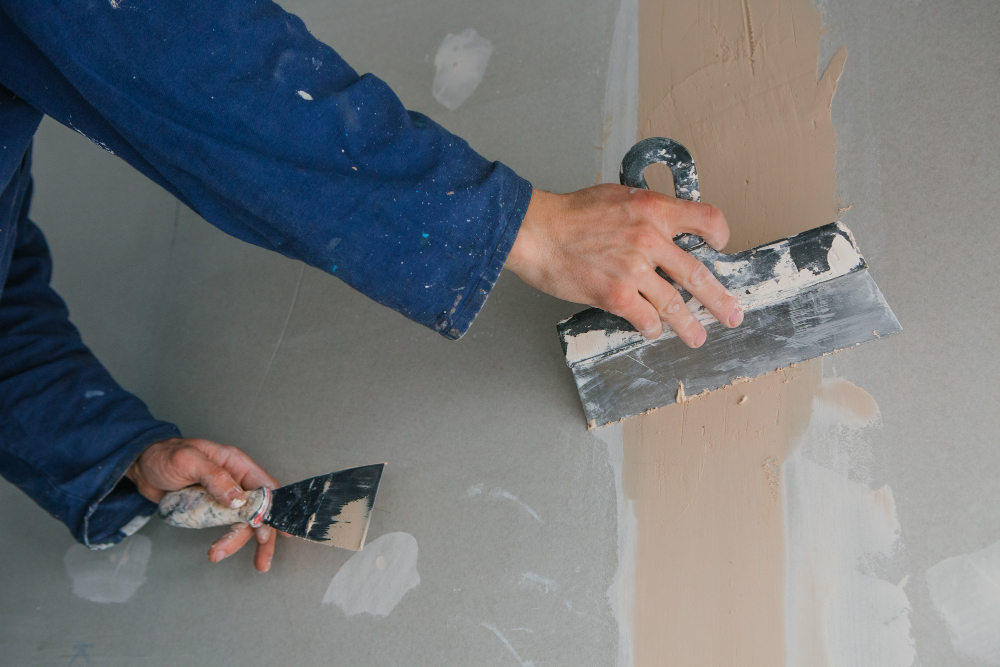Sublimez vos intérieurs avec le meilleur plafonnage de Bruxelles
Présentation de Bruxelles Plafonnage Bel Mrsc
Découvrez l'alliance parfaite entre l'innovation et l'élégance dans le plafonnage – Dévoilement de Brussels Plafonnage Bel Mrsc pour les intérieurs contemporains à Bruxelles, Belgique
Entrez dans un royaume où l’innovation s’harmonise parfaitement avec l’élégance – en présentant Brussels Hitech, la quintessence du plafonnage sophistiqué pour les espaces contemporains à Bruxelles, en Belgique. Élevez votre environnement avec un design de pointe et une technologie de pointe, alors que nous redéfinissons l’ambiance de votre espace. Notre collection de solutions de plafonnage Brussels Hitech témoigne de la modernité, offrant une gamme diversifiée d’options qui allient sans effort style et fonctionnalité. Transformez vos intérieurs en une symphonie captivante de textures et d’esthétique, alors que nos solutions de plafonnage Hitech occupent le devant de la scène, embellissant le cœur de Bruxelles avec éclat et sophistication.
- Plafonneur Bruxelles Hitech
Notre approche
Entrez dans un royaume où l’innovation s’harmonise parfaitement avec l’élégance – en présentant Brussels Hitech Plafonnage, la quintessence du plafonnage sophistiqué pour les espaces contemporains à Bruxelles, en Belgique. Élevez votre environnement avec un design de pointe et une technologie de pointe, alors que nous redéfinissons l’ambiance de votre espace. Notre collection de plafonnage Brussels Hitech témoigne de la modernité, offrant une gamme diversifiée d’options qui allient sans effort style et fonctionnalité. Transformez vos intérieurs en une symphonie captivante de finitions impeccables et d’esthétique, alors que nos solutions de plafonnage Hitech occupent le devant de la scène, parachevant le cœur de Bruxelles avec éclat et sophistication.
- Services que nous offrons
Plafonnier Bruxelles Hitech Services

Plafonnage
Transformez votre espace de haut en bas avec nos services experts en plafonds. Que vous cherchiez à ajouter une touche d’élégance ou à améliorer les propriétés acoustiques, notre équipe qualifiée se spécialise dans la conception, l’installation et l’entretien de plafonds pour donner vie à votre vision.

Rénovation
Revitalisez votre environnement de vie ou de travail grâce à nos services complets de rénovation. Du rafraîchissement d’une esthétique désuète aux améliorations structurelles, notre équipe assure un processus de rénovation fluide et efficace, insufflant une nouvelle vie à votre espace.

Isolation
Faites l’expérience du confort et de l’efficacité énergétique avec nos solutions d’isolation haut de gamme. Nos services se concentrent sur la création d’un environnement thermiquement efficace, la réduction de la consommation d’énergie et le maintien d’une température confortable dans toute votre propriété.

Construction
Embarquez pour votre aventure de construction avec notre équipe expérimentée à la barre. Dès le départ, nous gérons tous les aspects de la construction, garantissant précision, qualité et livraison dans les délais. Faites-nous confiance pour transformer votre vision en une réalité tangible et structurellement solide.

Travaux de plâtre
Ajoutez une touche de finesse à vos murs et plafonds grâce à nos services de plâtrerie impeccables. Nos artisans qualifiés appliquent magistralement le plâtre pour créer des surfaces lisses et impeccables, améliorant ainsi l’attrait esthétique global de vos espaces intérieurs.

Pose de cloisons
Optimisez votre espace en installant des cloisons adaptées à vos besoins. Que ce soit pour l’intimité, l’organisation ou l’esthétique, nos services d’installation de cloisons offrent des solutions fonctionnelles et visuellement attrayantes, assurant une intégration transparente dans votre espace existant.
- Pourquoi nous choisir
Pourquoi choisir le plafonnier Bruxelles Hitech
Prêt à commencer ?
Contactez notre équipe
- Notre processus
Comment nous le faisons
- Témoignages
Que disent nos clients ?
"Choisir le plafonnier Brussels Hitech a changé la donne pour notre maison. Les solutions d'éclairage personnalisées ont apporté une touche moderne à notre espace de vie, et l'intégration intelligente a changé la donne. Le professionnalisme et l'attention portée aux détails de l'équipe ont fait de l'ensemble du processus un brise. Nos sincères remerciements pour avoir transformé notre maison en un havre de paix élégant et bien éclairé ! »

"L'expertise et le savoir-faire de Ceiling Light Brussels Hitech ont vraiment dépassé nos attentes. De la consultation initiale à l'installation impeccable, leur engagement en faveur d'un design de pointe et de l'efficacité énergétique était évident. Le résultat ? Un espace magnifiquement éclairé qui complète parfaitement notre style de vie. Hautement recommandé!"

"Nous avons récemment engagé Ceiling Light Brussels Hitech pour un projet de rénovation, comprenant la conception du plafond et les travaux de plâtrerie. L'engagement de l'équipe en faveur de la qualité et de l'esthétique nous a impressionnés. Notre espace bénéficie désormais d'un look moderne et sophistiqué, grâce à ses solutions innovantes et à son souci du détail. Bravo à toute l'équipe pour le travail bien fait !"

- Foire aux questions
tu as une question? Nous sommes là pour vous aider.
Découvrez les caractéristiques distinctives et les technologies innovantes qui distinguent le plafonnier Brussels Hitech, offrant un mélange unique de style, de fonctionnalité et de design d'avant-garde qui élève votre espace.
Découvrez nos solutions sur mesure qui vous permettent de personnaliser votre expérience d'éclairage. Découvrez la flexibilité de nos conceptions et comment vous pouvez créer une ambiance unique qui complète votre style individuel.
Découvrez les avantages en matière d’économie d’énergie de nos solutions d’éclairage. Nous vous fournirons des détails sur la façon dont nos luminaires Hitech contribuent à la durabilité tout en offrant un éclairage optimal pour votre espace.
Obtenez un aperçu complet de nos services d’installation. De la configuration initiale aux touches finales, comprenez les étapes à suivre et comment notre équipe de professionnels garantit une expérience d'installation transparente et sans tracas.
Découvrez notre expertise en matière de consultation et de conception, où nos professionnels vous guident tout au long du processus de sélection. Découvrez comment nous pouvons vous aider à choisir la solution de Plafonnier Bruxelles Hitech idéale, adaptée à votre espace et à vos préférences.
- Contactez-nous


